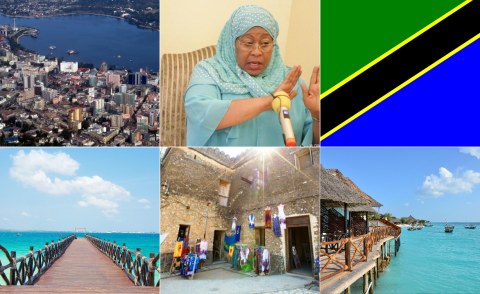Tanzania’s current account deficit is forecast to widen from an estimated 1.2 percent of GDP to 2.1 percent in 2021, according to Fitch Solutions.
The current account deficit will widen further to 3.0% of GDP in 2022, owing subtly to a worse outlook for global gold prices. Based on Fitch Solutions forecasts, gold prices will fall by 4.5 percent in 2022 to US$ 1,700/oz, as global economic conditions continue to improve. Thus, reducing investors’ search for safe-haven assets.
Aside this, Fitch Solutions indicates that the main driver of the trend in widening current account deficit is expected to be a recovery in imports, which have remained on the up side since the COVID-19 outbreak. Declining to a quarterly low of US$1.8 billion in Q2 2020, imports recovered to US$2.3 billion in Q1 2021 on a year-on-year basis.
As a result, Fitch Solutions projects that Tanzania’s real GDP growth will rise from an estimated 3.0 percent in 2020 to 5.3 percent in 2021. This reflects a 15.0 percent increase in imports according to Fitch Solutions.
Furthermore, the wider deficit will also be driven by a further strengthening of the country’s economic recovery. Fitch Solutions projects that real GDP growth of 6.2 percent in 2022, contributing to a forecast 11.0 percent increase in imports.
That notwithstanding, a stronger recovery of the tourism sector with arrivals set to increase by 49.7 percent will prevent a larger widening of the deficit, Fitch Solutions asserts.
Greater export growth to slow down the widening deficit
Meanwhile, a greater export growth will prevent a larger widening of the deficit in 2021. Fitch Solutions forecast goods exports increasing by 4.0 percent in 2021, largely due to strong gold exports comprising about 35.0 percent of total goods exports.
Recounting the bullish run of gold prices last year, the commodity increased by close to 20.0 percent, boosting Tanzanian gold exports. Fitch Solutions expect prices to remain high in the near term, averaging US$1,780/oz in 2021.
Consequently, stronger external demand will also increase Tanzanian agricultural exports including tobacco, coffee and other agricultural products for which production will rebound, Fitch Solutions projects.
Albeit, the research firm believes that the widening deficits, overall, for 2021 and 2022 are much smaller than an average of 6.8 percent of GDP recorded from 2010 to 2020. Thus, current account financing will not pose any issues for Tanzania in the coming years, Fitch Solutions.
Furthermore, Fitch Solutions estimates that the balance of trade’s foreign currency reserves will remain above 6 months of imports cover at year-end 2021. This is above the 4 month target. Also, debt service relief from the International Monetary Fund (IMF) will also help, with Tanzania opened to get US$ 25.7 million up until May 2022 should it need to.
“Early signs that President Hassan will be more economically liberal and less hostile to international organisations than her predecessor could open the door to more foreign direct investment in the quarters ahead.”
READ ALSO: Ghana-China ties: Ghana’s biggest trading partner and 3rd highest bilateral lender in 2020



















